Our Lifestyle Director, José Berrocoso, sits down with Bill Bensley to discuss the visionary design and sustainable innovation behind the InterContinental Khao Yai Resort.
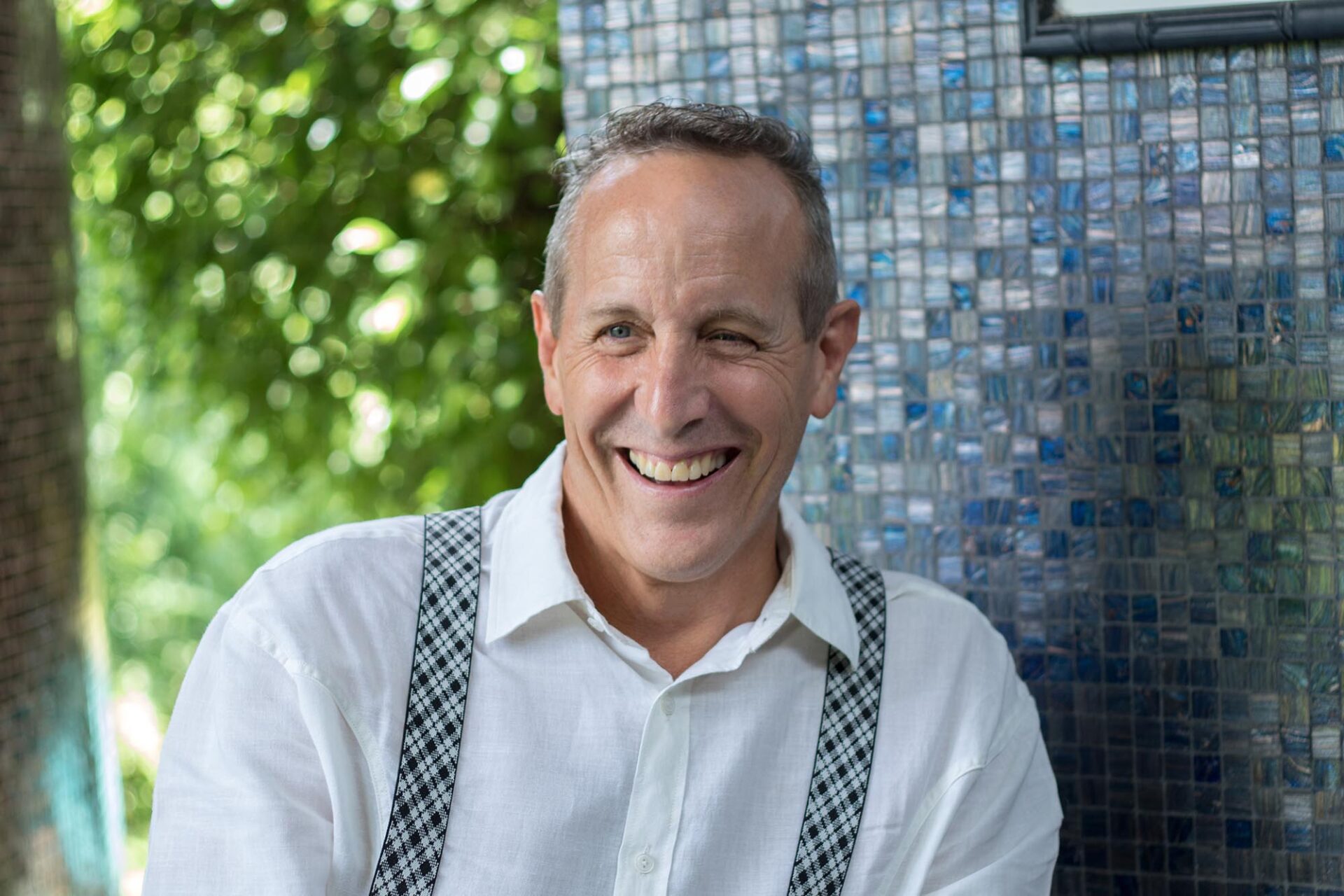
“I love storytelling via hospitality as one has a captured audience. Some listen, some don’t. That is the beauty of it all! When I travel, I especially love to learn; so I try to teach guests something new and interesting in each and every one of my new creations”
How did this project come about?
My marvellous client Rena was working on a project in Khao Yai, and asked me to come aboard. It is a beautiful part of the country with mountains and cooler weather – a novelty for Thais who travel there, many from Bangkok, hoping to get their annual dose of greenery, a chance to wear a sweater and be transported elsewhere for a while. As with all of our projects, this needed to have a really unique story that would make this a destination in and of itself.
Why the train carriages, and how did you find them?
I have always been a fan of upcycling and recycling – so repurposing train carriages was a dream come true. We found them all over Thailand. A couple of them had been sitting in a field for perhaps 50 years and, like Angkor Wat, Ficus trees had taken root on the roof and almost completely enveloped the carriage. While we had to remove much of the trees to pry the trains out of the field, I kept some of the huge root system as there is a certain beauty that comes with the idea of returning to Mother Earth. The average age of the carriages is 80 years.
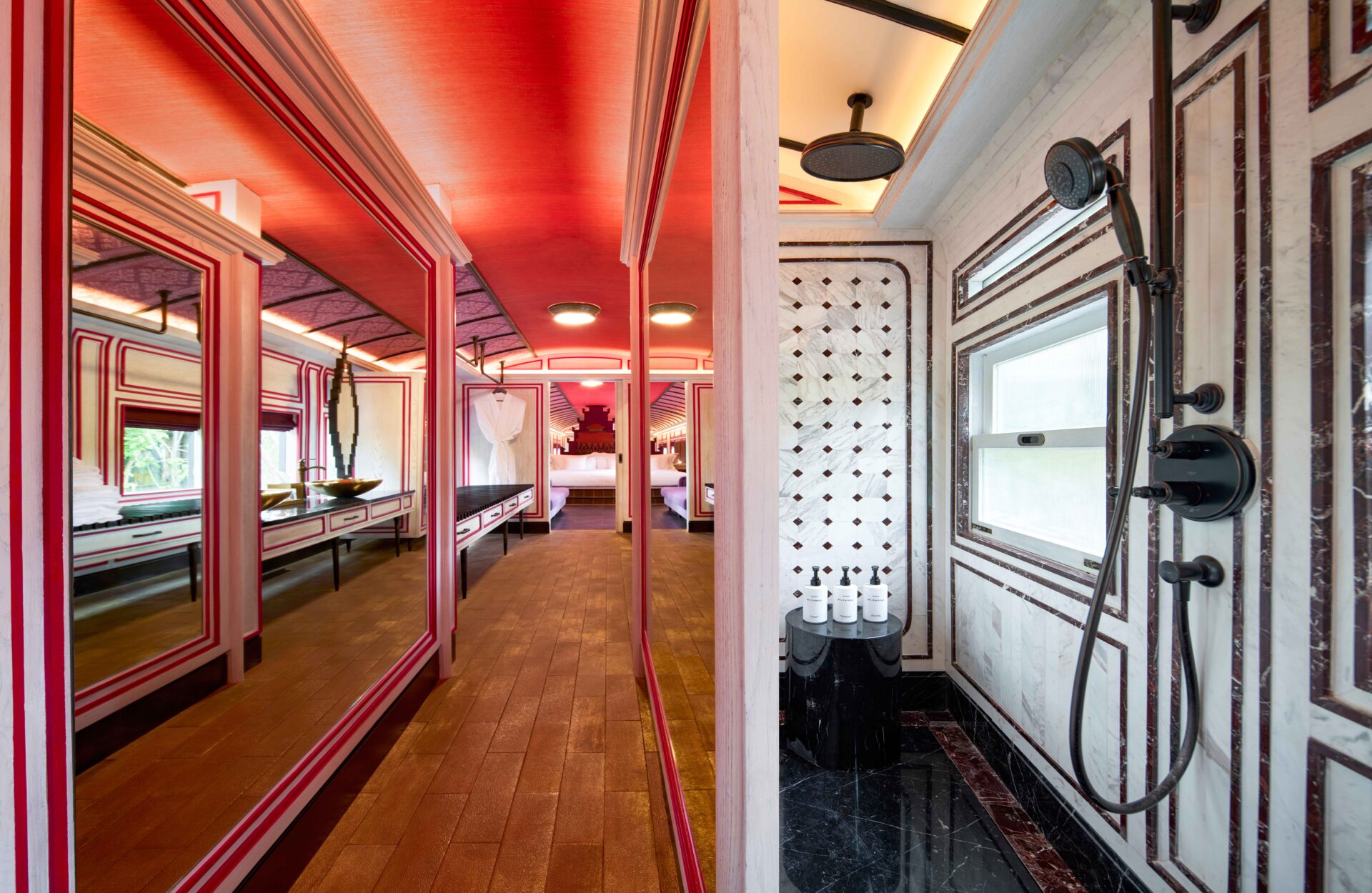
What were some of the biggest challenges you were faced with to convert these carriages into fully-functional luxury suites?
Well… “fully-functional luxury suites” are about space for the most part, and these carriages are only 2.5 metres wide. So, our best suites are 2.5m x 30m… that was a challenge!
What’s your (personal) favourite aspect of this project?
The fact that we breathed new life into garbage to create magic.
What came first; the location in Khao Yai, or the train carriages?
The location – a stunning piece of land on the edge of Thailand’s most important forested national park. As a lover of nature and a conservationist it is always a thrill to work on sites like this – and a responsibility to do as little damage as possible. We had actually designed a complete hotel scheme when I was inspired by the architecture of a local King Rama V era railway station… I scrapped what we had and redesigned the whole thing, bringing in the idea of upcycling train carriages to really tell the story of an old station in Khao Yai.
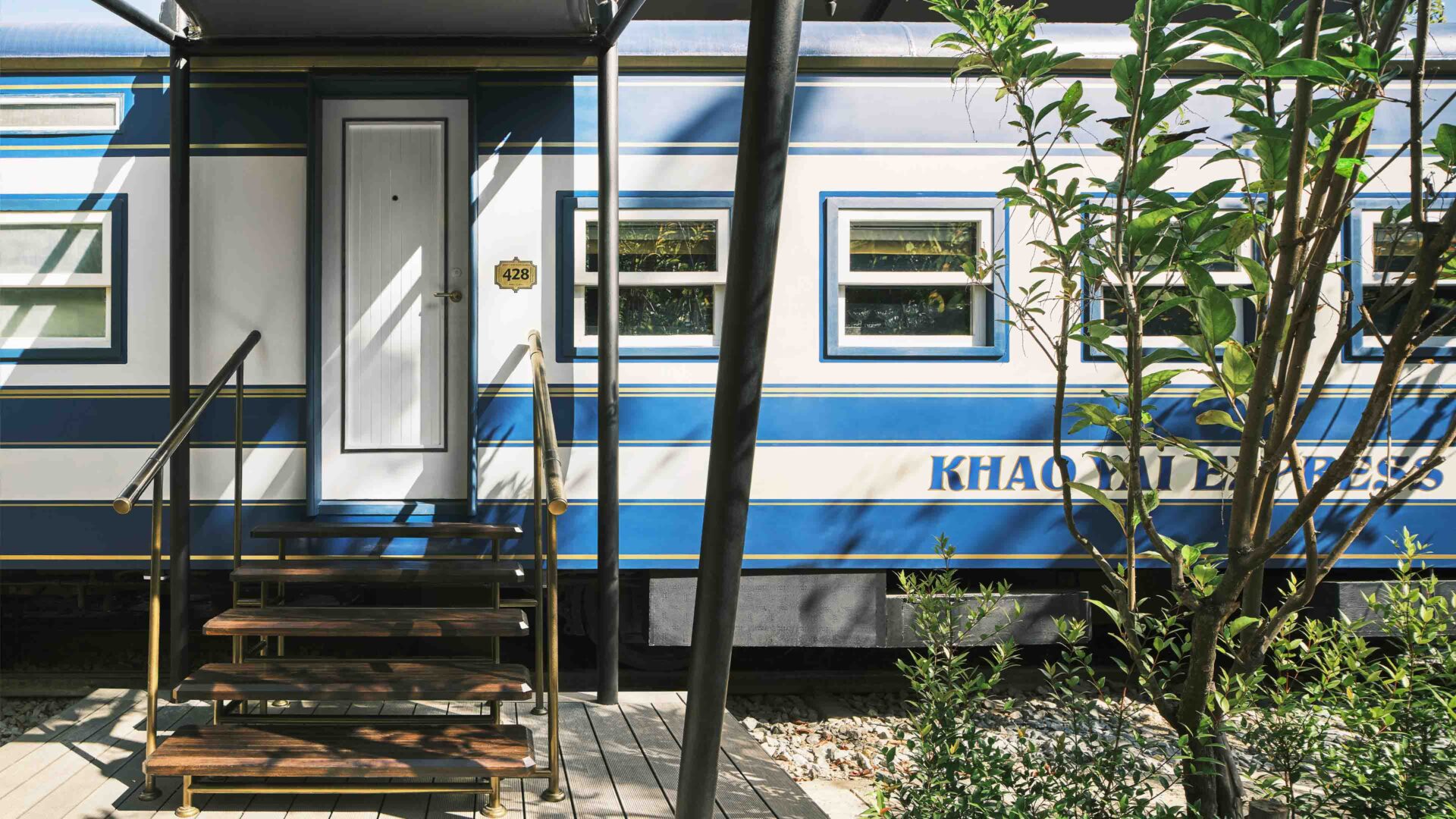
What makes this particular location so ideal for this project?
Khao Yai has always been a prized getaway for wealthy Thais, a hill station of sorts where many have large country estates. It is just two hours away from Bangkok, and the cool clime and forested mountains made it an idyllic escape from the heat of the city. There are buckets of things to do there be they activities, cultural experiences and nature to immerse oneself in – it’s very special. And with a name like Intercontinental behind us, we can reveal this destination to the larger world of travellers. Khao Yai was always overlooked by international luxury travellers who instead headed to Chiang Mai. As it has grown into Thailand’s second largest city, with traffic jams and some high rises, Khao Yai has a chance to become the next great nature destination in Thailand for foreign travellers – with a pleasant drive from Bangkok, rather than getting on another plane.
Did it take some work to convince the owner, or was she on board from the outset?
Rena and I previously worked together to create the Rosewood Luang Prabang, which melded storytelling with restoration and building in a way that preserves nature. She understands BENSLEY and we have a wonderful friendship – as soon as I showed her the new plans for a train inspired hotel, she was truly On Board! It is great to work with clients that are also friends, as we have a lot of fun dreaming ideas up, visiting the mock up trains, and collecting rare items for this special project.
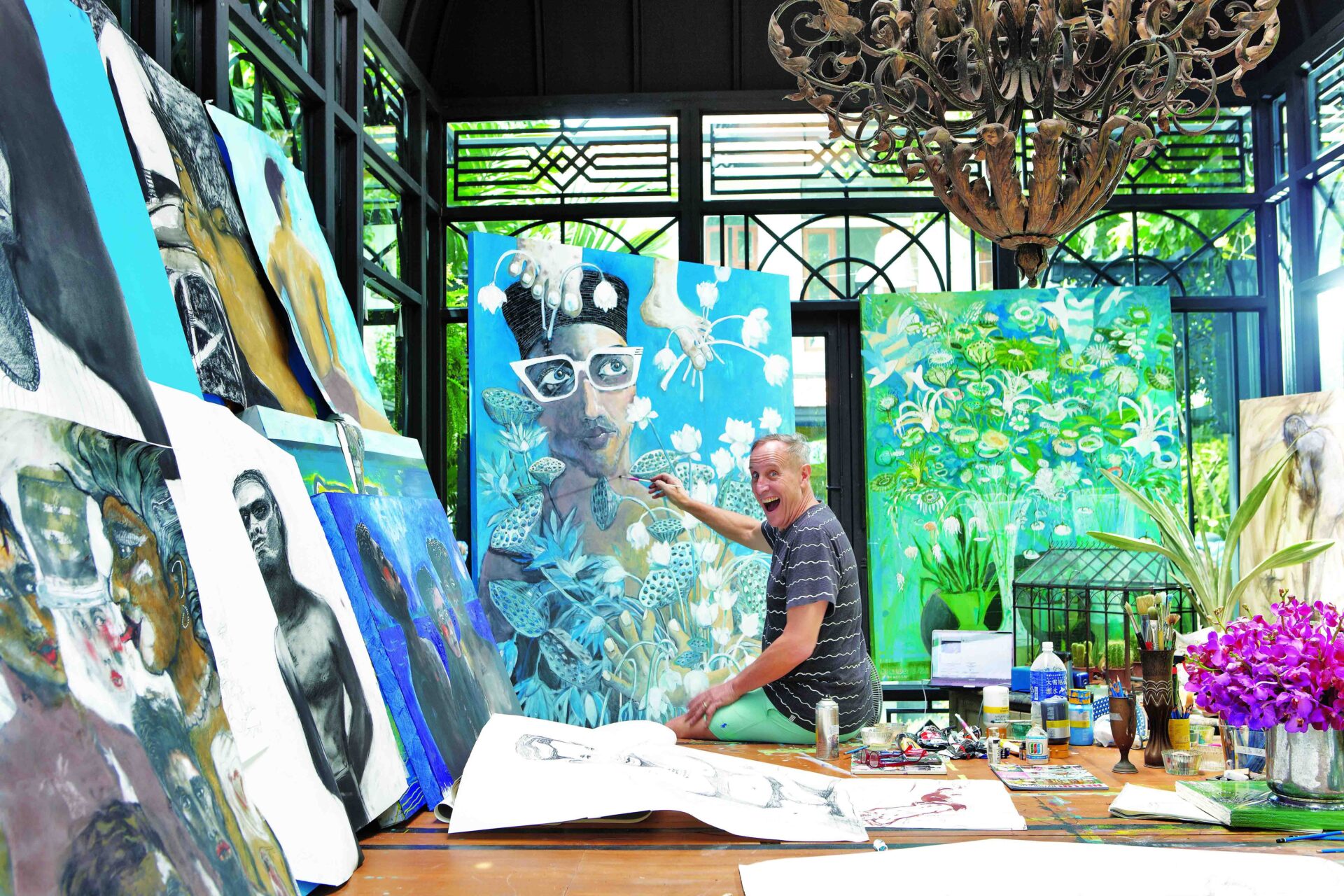
We noticed that each suite is named after a Thai city with its own unique design inspiration. Why did you decide to go for this theme?
The train car suites, and every room, tell the tale of a train conductor called Somsak who grew up near Khao Yai. Since childhood his passion was trains – he was a ticket collector, a conductor, a station master – all the time collecting train memorabilia. One day he found out there were plans to build an extension of the line going through to Khao Yai! He gathered his savings, bought a plot of land and commissioned a local architect to design a station and ticket office in the style of the local Rama V architecture he had come to love, and a small dwelling which he filled with his Railway collection.
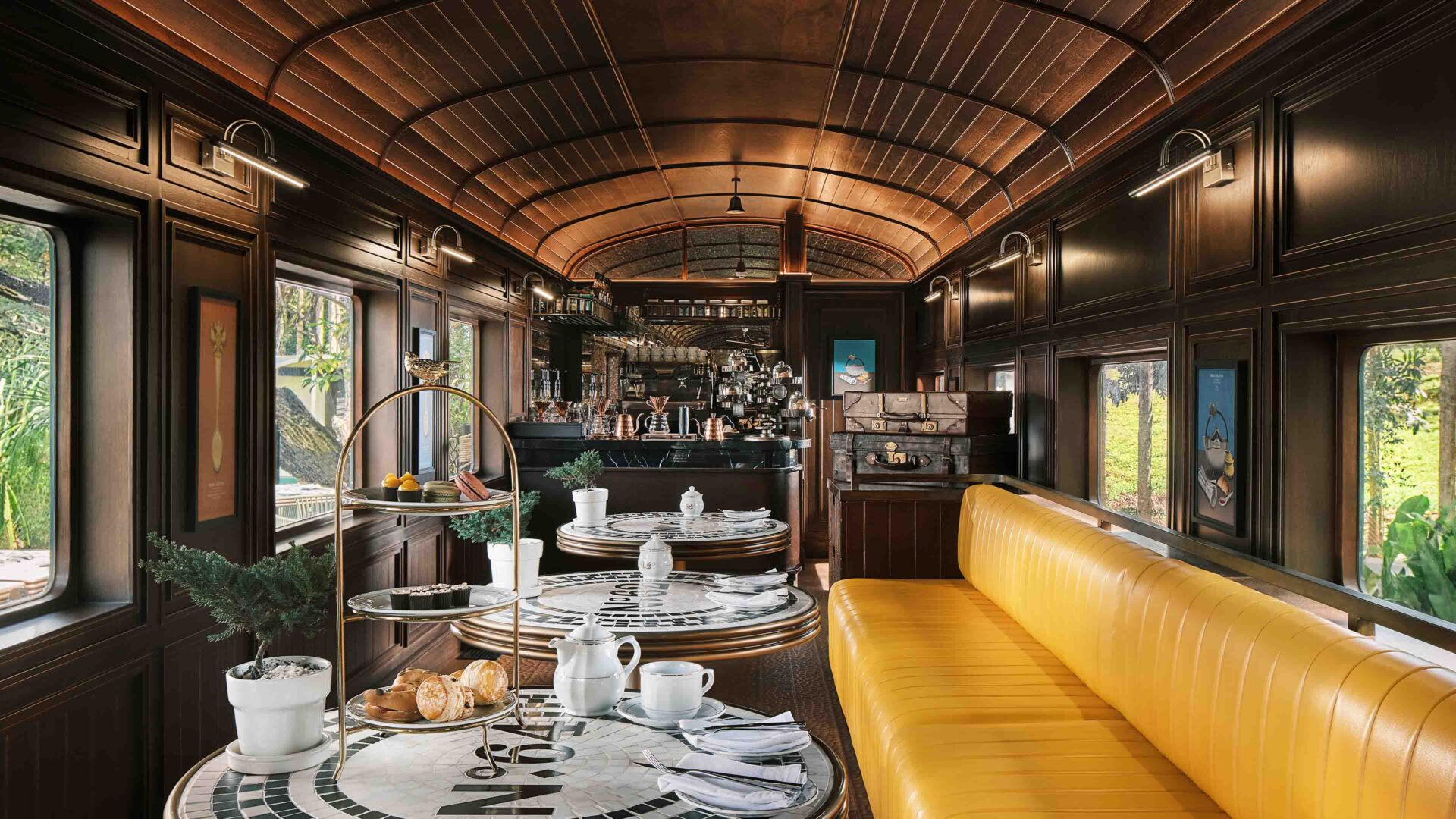
While working Somsak saved every penny to experience the most incredible train voyages on earth. They took him to Sri Lanka and India, and then closer to home: Hanoi, Kuala Lumpur, Singapore, Yangon, Luang Prabang, Saigon, Phnom Penh, and Chiang Rai, Khon Kaen, Song Kla, Sukhothai or even Chanthaburi. These voyages, which he could have taken the train to from Khao Yai, became the inspiration for the train carriages (suites). These are all uniquely designed to reflect each voyage and transport guests to old time train travel glamour – complete with boarding cards and special tags for their luggage! The presidential suites has private standalone pools, and even guests in the main hotel guestrooms have rooms which feel just like a train, complete with station signboards, luggage racks, bunk beds (for some) and private outdoor bathtubs (for others)!
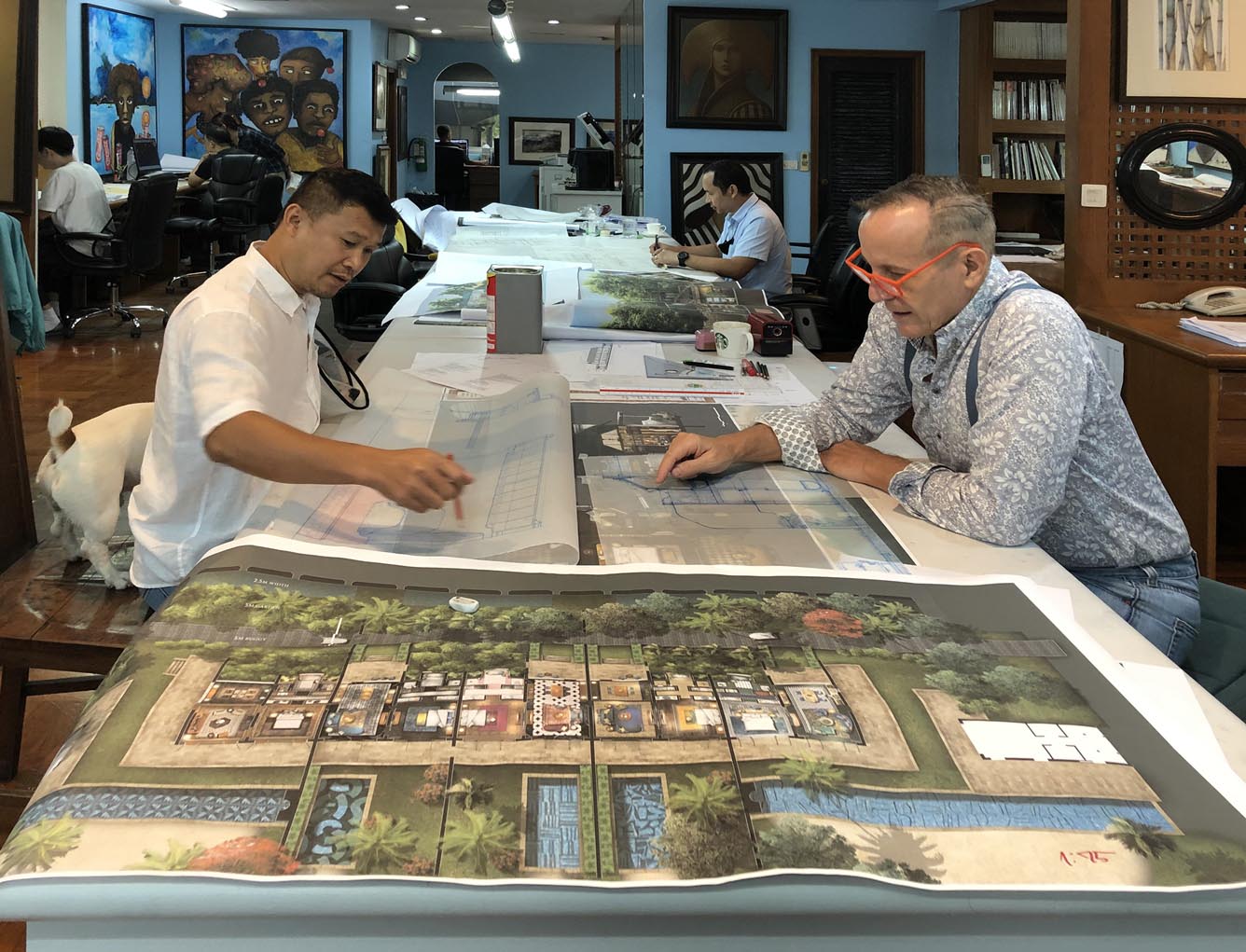
The projects BENSLEY typically gets involved with are characterized by elements of (nature) conservation, sustainability, storytelling and unique destination experiences. How does this new project tick all these boxes?
This is a unique destination as Khao Yai is just coming into itself and beginning to attract people from beyond our borders. This is just the start! In terms of storytelling we loved coming up with the tale of Somsak the train conductor and developing his story through every part of the hotel – as always, it is the DNA of our project and guides all of our design choices, so that guests are truly and completely transported to a world of our own creation – while still being rooted in reality. As for sustainability and conservation, we always build using the sustainable principles outlined in my white paper and also considered how best to build so that we wouldn’t do harm to this natural, beautifully wooded site. We also brought in 100 year old, colossal trees which were seeking homes and planted them here. They are gorgeous! Another aspect of sustainability is the train carriages themselves – the truest form of recycling and upcycling.
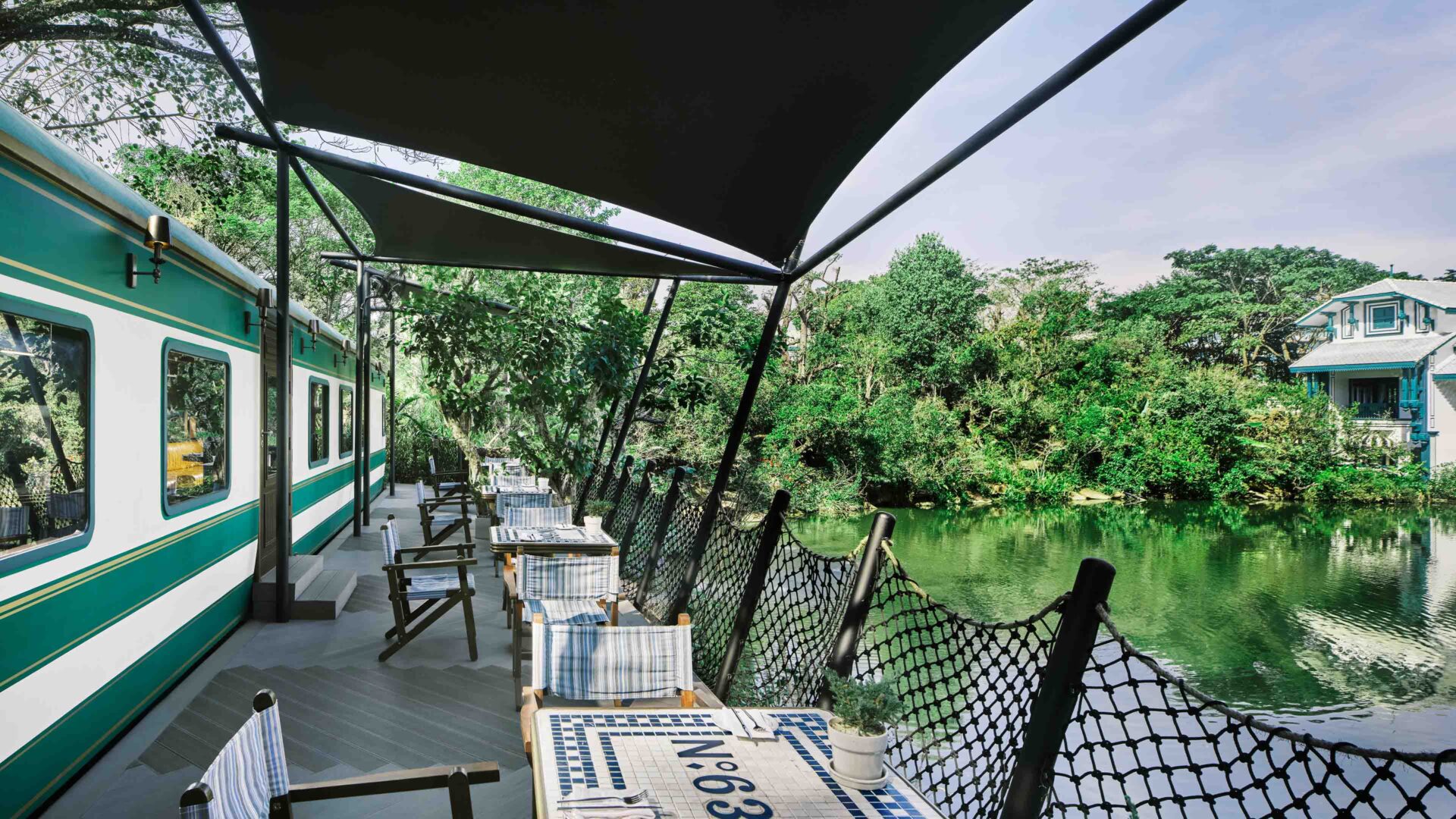
How did you come up with this design concept and what was the most challenging aspect of turning it into a reality?
I have always been a lover of trains… it is a bit of a fetish of mine, I’ve done all sorts of train journeys, the Belmond trains, in South America and so on. When I was in college I used to take groups of old ladies coast to coast every summer from British Colombia, Vancouver Island all the way to Quebec! On a train… It was a great job, I did that for three summers!
Anyhow, the concept came when I was on the highway going towards the old airport, and I was looking down onto the old trainyard, full of old rusting train carriages there, and I thought how cool would that be, to upcycle these carriages? That was where the idea first came from… it just struck me. And the hardest part was finding the trains. You would think that they’re just sitting out there and rusting and so forth but actually no, within Thai society they are very much coveted and they cost a lot more than they are really worth. There are many people that like trains and I like to collect these things. There is, how to say… even though they are sold at public auction, there are the “right people” to sell them to – this Old Boys Train Club of Trains if you will. To get the few that we did was like pulling teeth and we overpaid for them. Renovating was the easy part!
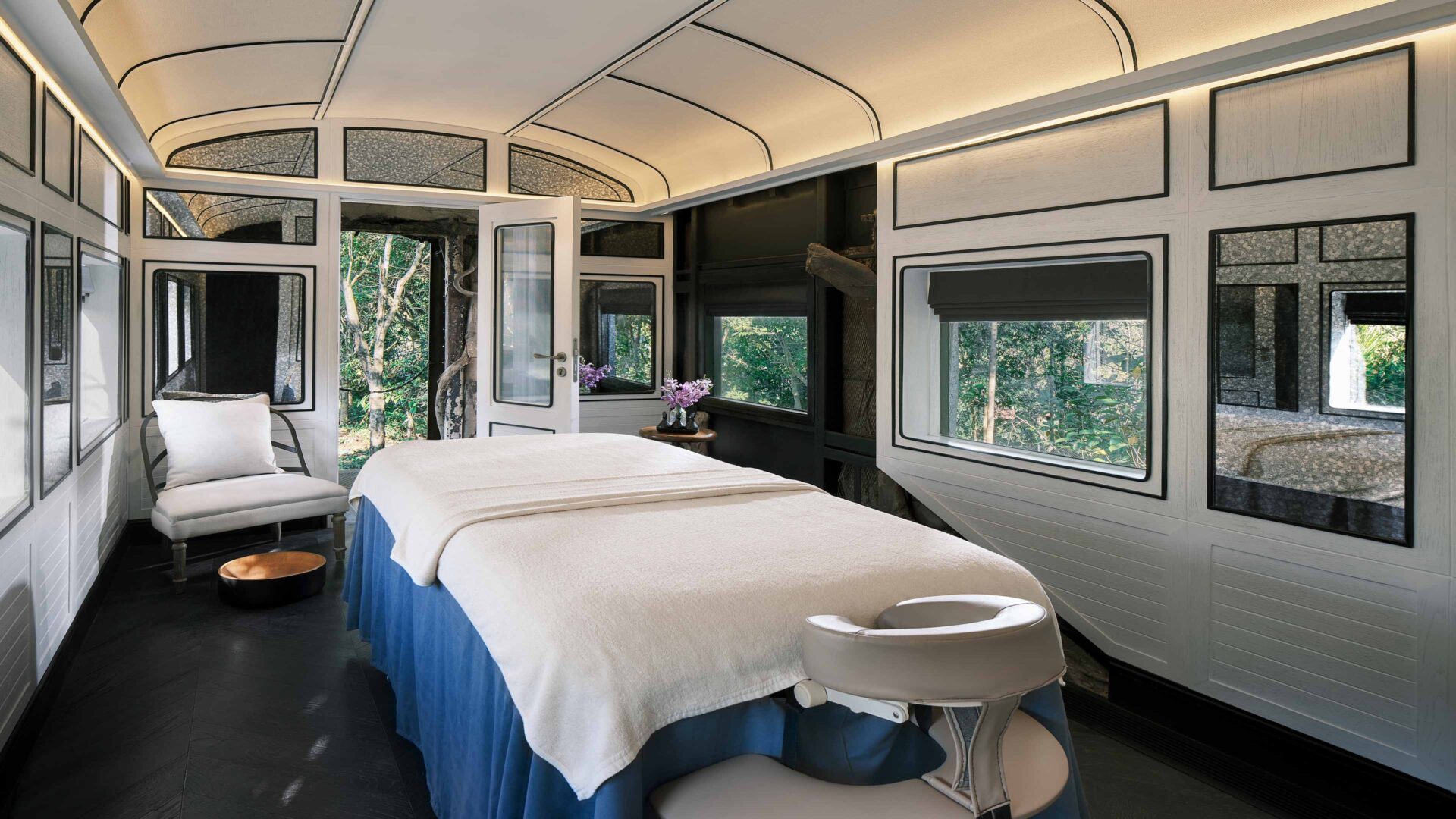
What are your favourite things about the train carriages – any recommendations on how guests should enjoy them?
Well to start with I think the grounded property has turned out beautifully… While it is in a building you do feel like you are in a train as the proportions are just perfect. There is this corridor that is narrow just like a train with tracks on the floor; it really evokes the feeling of train travel. The Presidential Carriage is really spectacular – comprising two carriages back-to-back and each one is 33 metres long – so it could well be the strangest proportion suite anywhere in the world, its 2.5 metres by 66! The ends are the bedrooms but everything else is a walkthrough space – along with the decks of course.
What are your thoughts on the resort’s setting?
The gardens are absolutely gorgeous thanks to our lovely owner Rena’s dad, Khun Manit, who is a wonderful horticulturist and collector of ancient trees. He put a huge amount of time into these gardens and they are wonderfully mature. The National Park is hug and spectacular – a wonderful asset to be right next to, and most people who visit Khao Yai don’t even venture in! It’s a must for a cycle or a good trek.
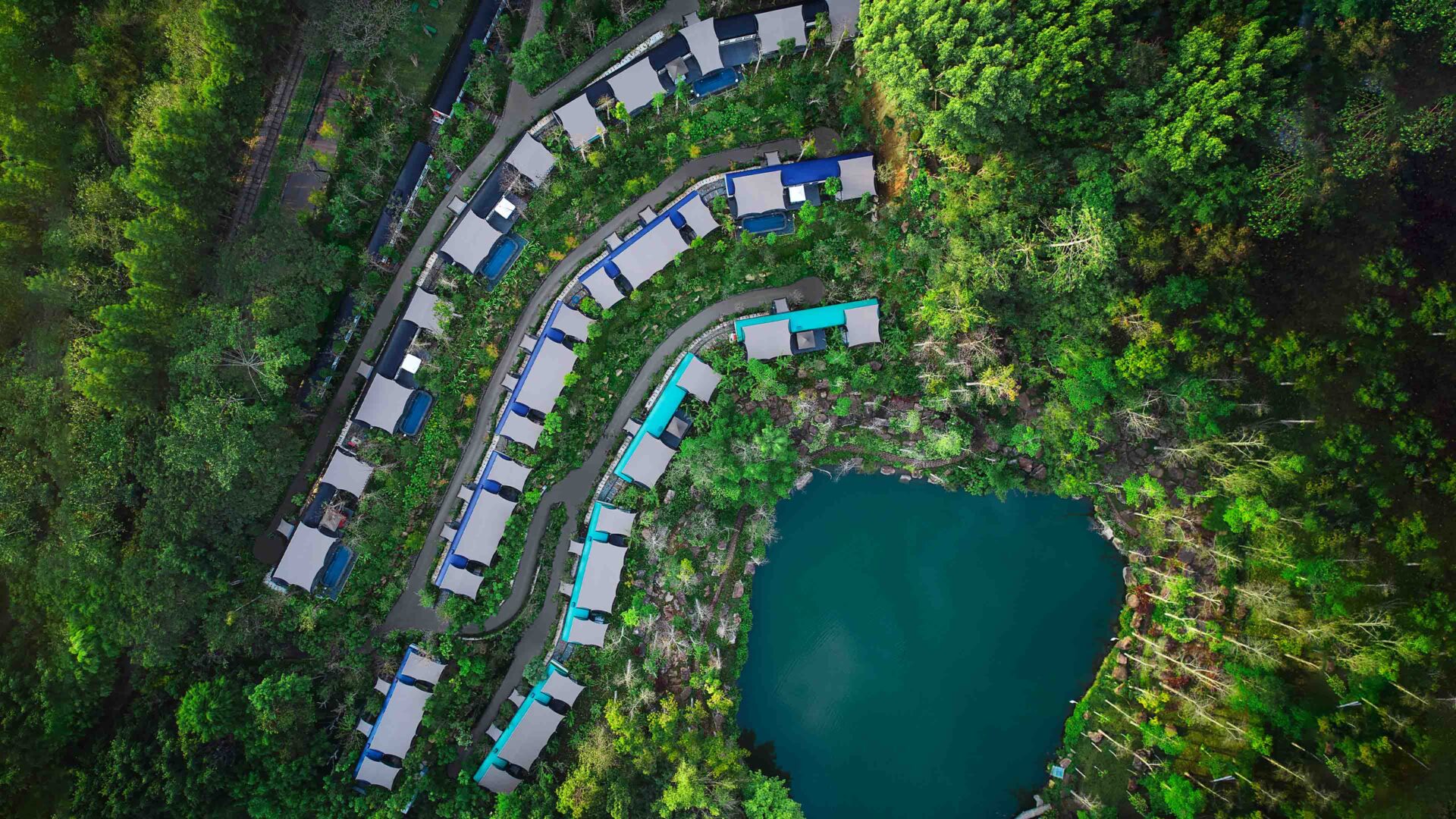
Your hotels are known to incorporate a lot of one-off antiques and flea market finds; where did you source some of the items you used in this design, and can you name some pieces that have an interesting backstory evoke a certain memory?
A lot of it in England at the Lincoln antiques fair, and also some here in Bangkok, at the big red building alongside Chatuchak market. My favourite find is a giant map of all the trains in building – we did a big collage on it and it hangs in the corridor of Pak Chong Guesthouse. It is HUGE at 2.5 m x 3m, and dates back from the 1920s, showing all the rail stations in Thailand. I got it for maybe 2000 baht after going through a big stack of ephemera.
When first designing this hotel, did you notice that the area was near old railroad tracks that once linked the northeast of Thailand to the rest of Southeast Asia?
No… when first became enamoured with the idea of bringing the romantic life to train travel back to Thailand, I researched and shopped a great deal in search of old maps (on display now) and that taught me that KINg Rama V’s vision for the Thai train system was far greater than exists today. There is a little used station, Pak Chong, that was built in 1899. In the future we plan to bring guests by train from Bangkok to PAK CHONG and then it is just a short shuttle to site.

What were the biggest challenges your team faced in converting them to residences, for example, installing engineering, plumping, fixtures and fittings, especially at the level required from a luxury guest suite?
The Challenges are about space for the most part, and these carriages are only 2.5 metres wide. So, our best suites are 2.5m x 30m.
Did you take any inspiration from the compartmentalized design of the most famous trains around the world?
Yes certainly. The key to making interiors work on a train is to have a practical use for every single square inch. Not an iota can be wasted. The idea of high-level storage is universal and can be very beautiful at the same time.








